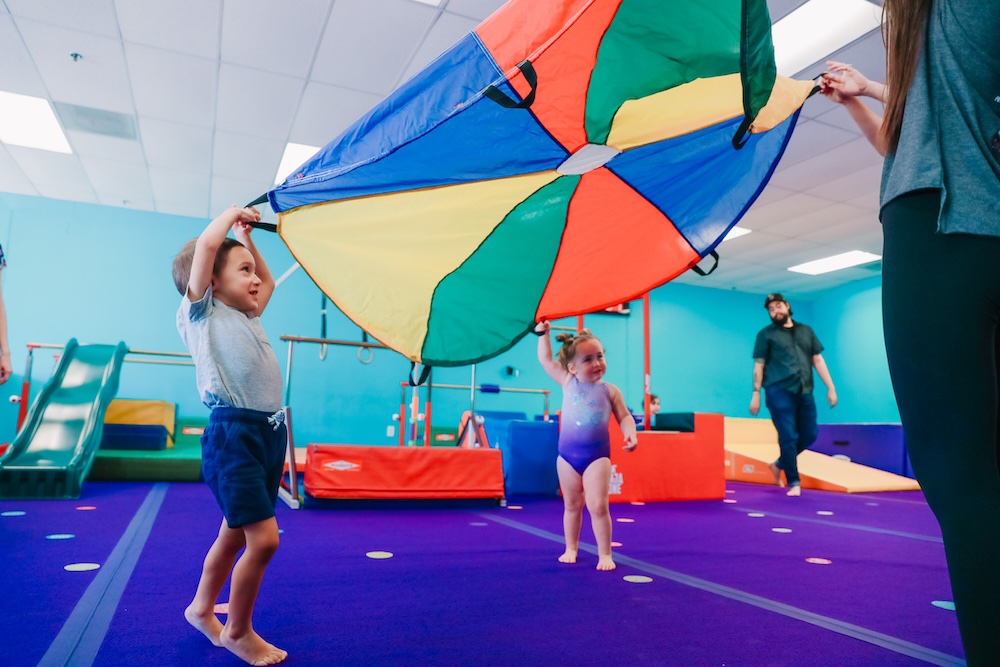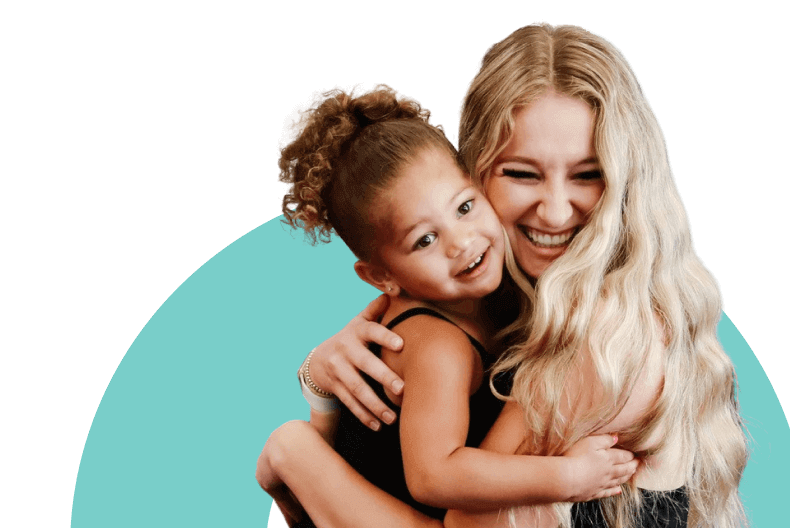As the cooler months roll in, staying active indoors can feel like a challenge. You know movement is essential, but when playgrounds and parks aren’t an option, it takes creativity to keep kids engaged.
The good news? With the right indoor activities for kids, staying active indoors can be simple, safe, and fun.
Below are ideas you can try today, plus how to level up with structured classes when your child is ready for more.
Why Indoor Activities for Kids Still Matter in Cooler Months
Even when it’s chilly outside, the CDC’s physical activity guidelines for children recommend that kids still need at least 60 minutes of movement daily.
Keeping kids active indoors supports whole-child development, and the right amount of physical activity can help your child:
- Build stronger bones and muscles
- Boost brain health, focus, and school readiness
- Support emotional regulation and mood
- Create long-term healthy habits
Movement doesn’t just burn energy. When structured correctly, it can help your kids learn how to problem-solve, boost their self-esteem, and maintain their overall well-being.
5 Simple Indoor Activities for Kids at Home
If you’re looking for a way to stay active at home, these indoor activities require minimal setup and work in small spaces. Rotate them through the week to keep things fresh.
1. Simon Says With Movement
This classic activity gets an upgrade when you mix in physical challenges. Instead of just “Simon says touch your nose,” add “Simon says do five jumping jacks,” “crab walk to the door,” or “run in place for 10 seconds.”
Not only does this keep kids active indoors, but it also strengthens their listening skills and sharpens their focus.
Fun variations to make things interesting:
- Use animal-themed moves (hop like a frog, waddle like a penguin)
- Add colored floor spots or pillows as “stations”
- Try a reverse round where kids lead and parents follow
2. Living Room Dance Parties
Turn on a favorite playlist, clear some space, and start a family dance party. Parents who join in make it even more fun, and kids get a heart-healthy cardio burst without realizing it.
Dancing encourages creativity, improves coordination, and builds family connection — a perfect quick win on busy evenings.
Here are some ways to keep your dance parties fresh:
- Theme nights (decade songs, superhero tracks, pajama party)
- Freeze dance or dance charades
- Create a simple 4–8 count family routine and perform it together
3. Scavenger Hunts Around the House
On days when kids need more structure, turn movement into a mission with a scavenger hunt.
Transform ordinary rooms into adventure zones. Hide small toys or create lists based on colors, shapes, or letters and have kids jog, tiptoe, or bear-crawl to find each item.
This keeps bodies moving while building problem-solving and early literacy or math skills.
Ideas for making scavenger hunts engaging and educational:
- Timed challenges (find 5 blue items in 60 seconds)
- Teamwork hunts for siblings or parent–child pairs
- Educational twists (ABC hunt, number match, simple rhyming clues)
4. Balloon Volleyball (With Parent Supervision, of Course)
When space is limited and energy is high, balloon volleyball is a go-to. All you need is a balloon and an imaginary net (couch, tape line, or a hallway). As a bonus, the slow-floating “ball” makes inside play safer and accessible for players of all ages.
Balloon volleyball builds hand–eye coordination, reaction time, and teamwork while helping kids burn extra energy.
Three ways to make it more challenging:
- Play to 11 points and keep score
- Add obstacles (chairs as boundaries) or use two balloons
- Host a mini family tournament with quick rounds
5. Yoga for Kids
For a calmer option that still builds strength and focus, try kids’ yoga. Introduce child-friendly poses, such as tree, cat-cow, bridge, and downward dog. Keep sequences short and playful to keep kids engaged.
Yoga improves flexibility, balance, and body awareness, and it’s an excellent activity to help kids wind down before bedtime.
Tips to make yoga fun for your children:
- Use animal names and story-based sequences
- Follow along with short kid-friendly yoga videos or cards
- Play calming music and practice three deep “belly breaths” together
Turning Screen Time Into Active Time
Technology can support movement when used intentionally. Pair short bursts of screen-based guidance with off-screen action to keep kids engaged and moving.
Try these smart ways to blend activity with screen time:
- Choose movement-based apps, dance games, or kid-friendly fitness videos
- Set interval timers (10 screen-based activities, 2 minutes of movement)
- Try family challenges (copy a dance, complete a mini workout together)
- Use a visual schedule that alternates quiet play with active play
Balancing screen time with activity matters because it teaches kids balance. They learn that technology can be used in positive, active ways, rather than just in passive ones.
By turning digital time into movement opportunities, it gives you a chance to model how screens can support health rather than replace it.
Keep Your Child Active During Cooler Months at America’s Kids In Motion!
At-home play builds a strong foundation, but kids also thrive when they join structured, social environments with expert guidance. That’s where America’s Kids In Motion makes a difference.
Our structured classes provide benefits that home play can’t fully match. With professional instruction, children learn safely while developing skills step by step, and the social side of group classes builds teamwork and confidence.
Sign up for a class at America’s Kids In Motion today! And give your child the gift of movement, confidence, and joy all year long.




